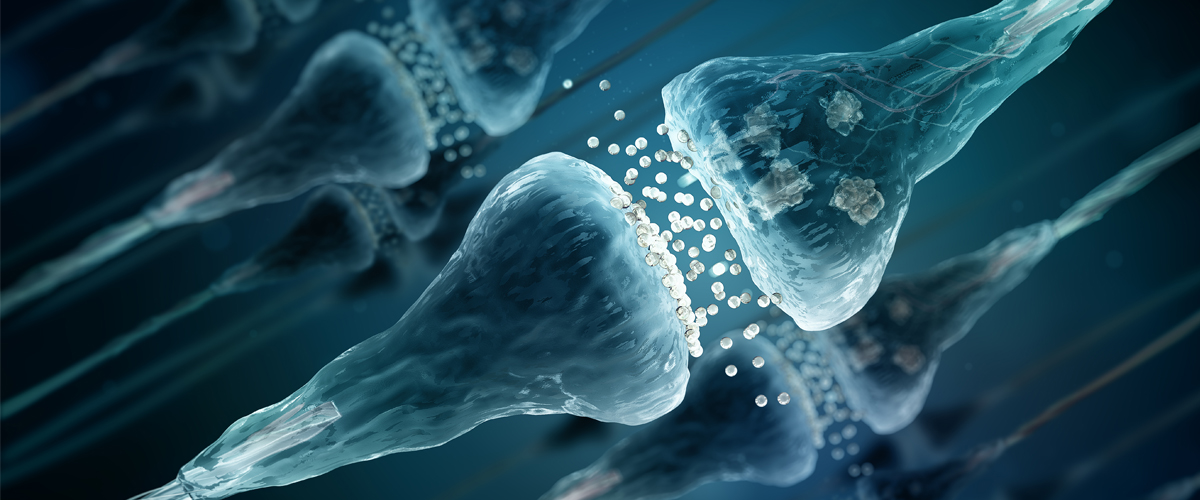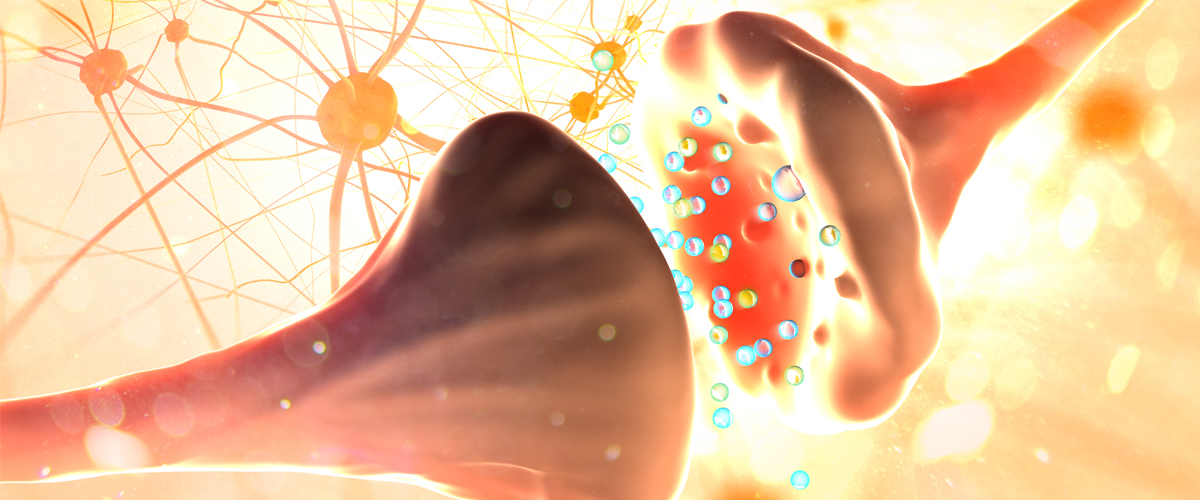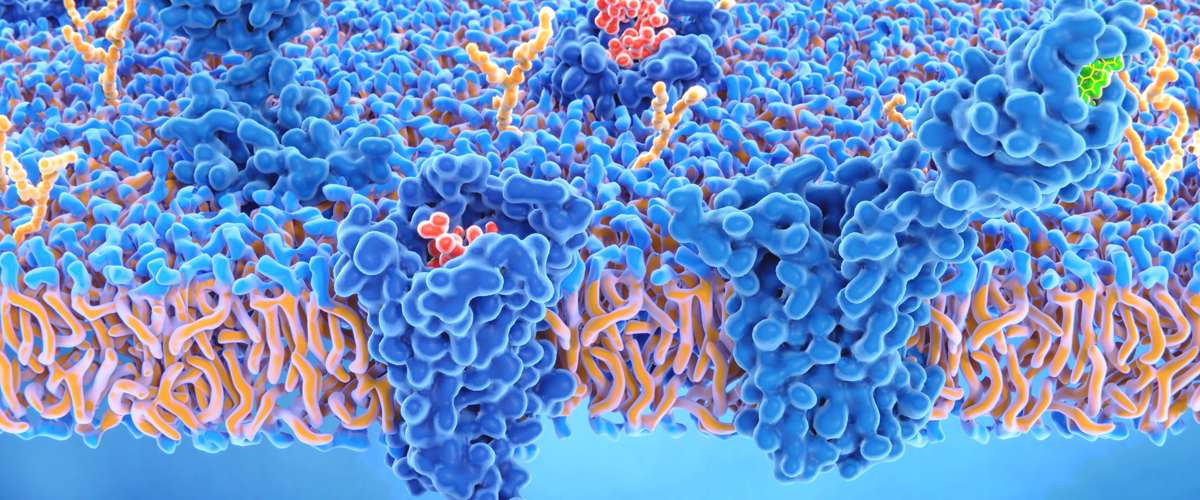Learn all about your body’s cannabinoid receptors and the role they play in keeping many important functions balanced and running optimally.
By now you’ve likely heard about the natural benefits of cannabis-derived cannabinoids like CBD and how they can help keep your body balanced. Cannabinoids are able to elicit these balancing effects through their interactions with specialized receptor sites called cannabinoid receptors.
Here we explore these specialized receptors, answering many of the questions you likely have, including:
- What are cannabinoid receptors?
- Why do we have cannabinoid receptors?
- How do cannabinoid receptors function?
- Where are the cannabinoid receptors located?
- How many cannabinoid receptors are there in the human body?
- How are cannabinoid receptors and CBD related?
Knowing about cannabinoid receptors will give you a better grasp on how cannabinoids, including CBD, affect your body and naturally boost health and wellness.
What are Cannabinoid Receptors?
Before diving right into the cannabinoid receptors definition, it’s necessary to first explain that these receptors are a crucial component of the body’s native endocannabinoid system.
The endocannabinoid system, or ECS for short, is one of the body’s largest neurotransmitter networks. The best way to think about the ECS is as an integrated balancing system for the body.
Found in all mammals, the endocannabinoid system is responsible for keeping in balance a variety of physiological functions, some of which include:
- Immune system response
- Mood
- Movement and coordination
- Sleep
- Appetite, hunger, and metabolism
- Memory and cognition
- Temperature
- Sensory processing
As you can imagine, a well-operating EC system is part of maintaining daily health and wellness. Its main objective is to maintain a stable internal environment despite changes in the external environment, and cannabinoid receptors in the body play a vital role in how well the system is able to regulate and maintain homeostasis.
Ready for that cannabinoid receptors definition now? Cannabinoid receptors, found throughout the body, are a class of cell membrane receptors under the G-protein-coupled receptor superfamily.
Cannabinoid receptors in mammals like humans and pets work closely with chemical messengers called cannabinoids. When they come together, they trigger a series of reactions designed to bring functions back into balance.
This answers the common question, why do we have cannabinoid receptors? Whenever a function becomes irregular, a well-operating endocannabinoid system responds by synthesizing cannabinoids. The cannabinoids then bind with ECS receptors to set in motion a variety of cellular responses aimed at returning the once imbalanced function to its balanced state.
It is because cannabinoid receptors are so widespread throughout the body that the EC system is able to play a role in balancing so many of the body’s functions.
So where are cannabinoid receptors in animals and humans located? They are found on the surface of cells in several physiological regions, including:
- The brain and central nervous system
- The immune system
- Connective tissue
- Organs and glands
What Cannabinoids Work with Cannabinoid Receptors?
Cannabinoid receptors function with three types of cannabinoids:
- Endocannabinoids are synthesized by the human body itself.
- Phytocannabinoids come from plants.
- Synthetic cannabinoids are compounds made by man in a laboratory.
There are two major endocannabinoids, or endogenous cannabinoids, that the body produces — Anandamide and 2-arachidonoylglycerol (2-AG). The brain naturally forms these endocannabinoids in the brain, organs, glands, connective tissues, and immune cells “on demand” as they’re needed.
Cannabinoid receptors also interact with phytocannabinoids, which are plant-based cannabinoids most often associated with those found in cannabis plants like hemp and marijuana. Several plants beyond cannabis also produce phytocannabinoids, including cacao, echinacea, electric daisy, and liverwort.
When cannabis or other plant cannabinoid products are consumed, phytocannabinoids are absorbed into the bloodstream where they emulate the behaviors of endocannabinoids and interact with cannabinoid receptors in the body.
The very first cannabinoid that scientists ever discovered was a phytocannabinoid. Back in the 1960s, researchers identified cannabis-derived cannabinoid THC, or tetrahydrocannabinol. It was from this discovery that they eventually went on to identify the endocannabinoid system and identify its role in homeostasis.
How Many Cannabinoid Receptors Are There?
The endocannabinoid system predominantly consists of two main types of receptors:
- CB1 (cannabinoid receptor 1)
- CB2 (cannabinoid receptor 2)
Cannabinoid receptor 1 (CB1) receptors are primarily found in the brain and central nervous system, as well as in various organs such as the liver, kidneys, and lungs.
Cannabinoid receptor 2 (CB2) receptors are found mostly on cells in the immune system and associated structures, including the spleen and the gastrointestinal system.
Each of these two receptors functions differently with the primary endocannabinoids.
The endocannabinoid 2-AG is considered a “full agonist” of both CB1 and CB2 receptors. This means that it binds well with both, activating them to stimulate a physiological response.
Anandamide, however, is considered a “partial agonist” of the two cannabinoid receptors. While it does bind with and activate them, it doesn’t fit inside either very well. This means that Anandamide doesn’t trigger such a powerful physiological response.
Researchers have collected evidence that suggests the presence a third or maybe more cannabinoid receptors in the brain and throughout the body, but their understanding of their functions is incomplete and research is ongoing.
The expression of cannabinoid receptors varies from person-to-person. Everyone has a concentration, number, and balance of cannabinoid receptors that are unique to them.

What Do Cannabinoid Receptors Do and How Do They Work?
Like a key fits into a lock, cannabinoids are designed to link with cannabinoid receptors. When the body synthesizes endocannabinoids or cannabis-derived phytocannabinoids are consumed, the cannabinoids flood the bloodstream in search of ECS receptors in the brain and elsewhere that they can bind with.
Once cannabinoids find a cannabinoid receptor in the body that fits, the two click together. The receiving neuron then spurs into action, passing along a message that carries out a variety of cellular responses needed for balance and proper functioning.
Once the function that had become irregular returns to balance, the endocannabinoid system “turns off” the series of reactions by releasing metabolic enzymes that break down and degrade the endocannabinoids.
It’s important to note that cannabinoids and endocannabinoid receptors communicate their messages differently than other systems in the body. Typically, chemicals are released from a neuron, travel across the synapse, and then attach to specific receptors located on a nearby neuron, called the postsynaptic cell.
With the ECS, it’s the postsynaptic neuron that is activated. It releases the chemical messengers, or endocannabinoids, that then “travel backward” across the synapse and to the presynaptic neuron, where they attach to cannabinoid receptors.
Why this unique characteristic of the EC system is significant is that it means our natural cannabinoids can control what happens next after a neuron is stimulated. Cannabinoids and cannabinoid receptors function like a “dimmer switch” for presynaptic neurons, controlling how messages are sent, received, and processed.

What Does Cannabis Have to Do With Cannabinoid Receptors?
Cannabis plants, including hemp and marijuana, contain more than 100 naturally occurring cannabinoids that when absorbed interact with EC system’s receptors to elicit effects.
When a person consumes cannabis products, these phytocannabinoids mimic the roles of the body’s own endocannabinoids like Anandamide and 2-AG to manipulate the body’s systems. The blood carries the compounds to the brain and other organs throughout the body, introducing them to cannabinoid receptors.
There is some evidence that supplementing the body with cannabis-derived cannabinoids can help support an endocannabinoid system that is otherwise deficient. A theory referred to as “endocannabinoid deficiency,” first introduced by Dr. Ethan Russo in 2004, suggests that in some cases a person’s body doesn’t produce enough cannabinoids for the endocannabinoid system to function properly.
If an EC system is dysregulated, communication between the brain and body can struggle and functions can become imbalanced.
The theory of endocannabinoid deficiency suggests that for a person who has become “starved” of endocannabinoids, cannabis-derived cannabinoids can be used as a supplement. Essentially, cannabis cannabinoids can augment endocannabinoids and stimulate the endocannabinoid system’s network of endocannabinoid receptors to help reach and maintain homeostasis.
Of the more than 100 cannabinoids in cannabis, the two most predominate are tetrahydrocannabinol (THC) and cannabidiol (CBD). While the two major cannabinoids share a similar chemical makeup, THC and CBD interact with cannabinoid receptors completely differently and subsequently elicit different natural effects.
THC is the cannabinoid people think of when they think of marijuana. It is a direct agonist of the endocannabinoid system’s CB1 receptors, and once absorbed overwhelms the endocannabinoid system to elicit intoxicating effects.
CBD does not cause any intoxicating effects. This is because it does not bind directly with CB1 marijuana cannabinoid receptors in the brain.

How Do Cannabinoid Receptors Work With CBD?
With hemp-derived CBD oil products hot in demand, a common question is how do cannabinoid receptors and CBD tie in with each other? CBD, or cannabidiol, is a cannabis-derived phytocannabinoid found in both marijuana and hemp plants, but is most abundant in hemp.
The first thing to note is that there is no such thing as CBD receptors, specifically. Like all cannabinoids, CBD influences the specialized CB1 and CB2 receptors. However, CBD does not directly interact with them.
While some cannabinoids like THC bind directly with cannabinoid receptors, CBD has little affinity for them. Instead, CBD interacts indirectly with the cannabinoid receptors. CBD is referred to as an “indirect antagonist of cannabinoid agonists,” which means that the cannabinoid works to suppress the CB1 and CB2 activating qualities of other cannabinoids.
CBD causes chemical changes by blocking cannabinoid receptors in the body. It sits imperfectly inside the cannabinoid receptors, not activating them and yet preventing any other cannabinoids or chemical messengers from binding to them.
CBD also works to increase the amount of Anandamide in the body. It does this by removing fatty acid amide hydrolase (FAAH), the enzyme responsible for breaking down and degrading Anandamide. By eliminating FAAH, CBD helps leave more endocannabinoids in the bloodstream for the body to use.
It is through these interactions that CBD augments the body’s own synthesized endocannabinoids and supports the EC system and its efforts to keep the body’s functions running optimally.
Outside of CBD’s influence on cannabinoid receptors in the brain and central nervous system, studies also indicate the compound interacts with several other non-cannabinoid receptors and ion channels in the body, including 5-HT1A serotonin receptors and TRPV-1 vanilloid receptors, to produce its natural wellness effects.
The naturally balancing reactions that come from cannabinoid receptors and CBD acting on each other are why CBD oil products have become so attractive as a supplement to support health and well-being.
CBD enthusiasts also appreciate that they can experience the benefits of plant-derived cannabinoids and not get high. Because CBD blocks CB1 receptors, not only will it not cause any intoxicating effects but it suppresses the euphoric properties of cannabinoids like THC.
When derived from hemp, CBD oil products are federally legal in the United States and available to buy online.
More to Learn About Cannabinoids and How ECS Receptors Function
There is more to learn about how cannabinoids like CBD can be used to encourage balance and wellness through the endocannabinoid system on our education page.
[Read More ...]
Originally posted on Understanding Your Cannabinoid Receptors via Vic Neufeld Medical Marijuana News
No comments:
Post a Comment